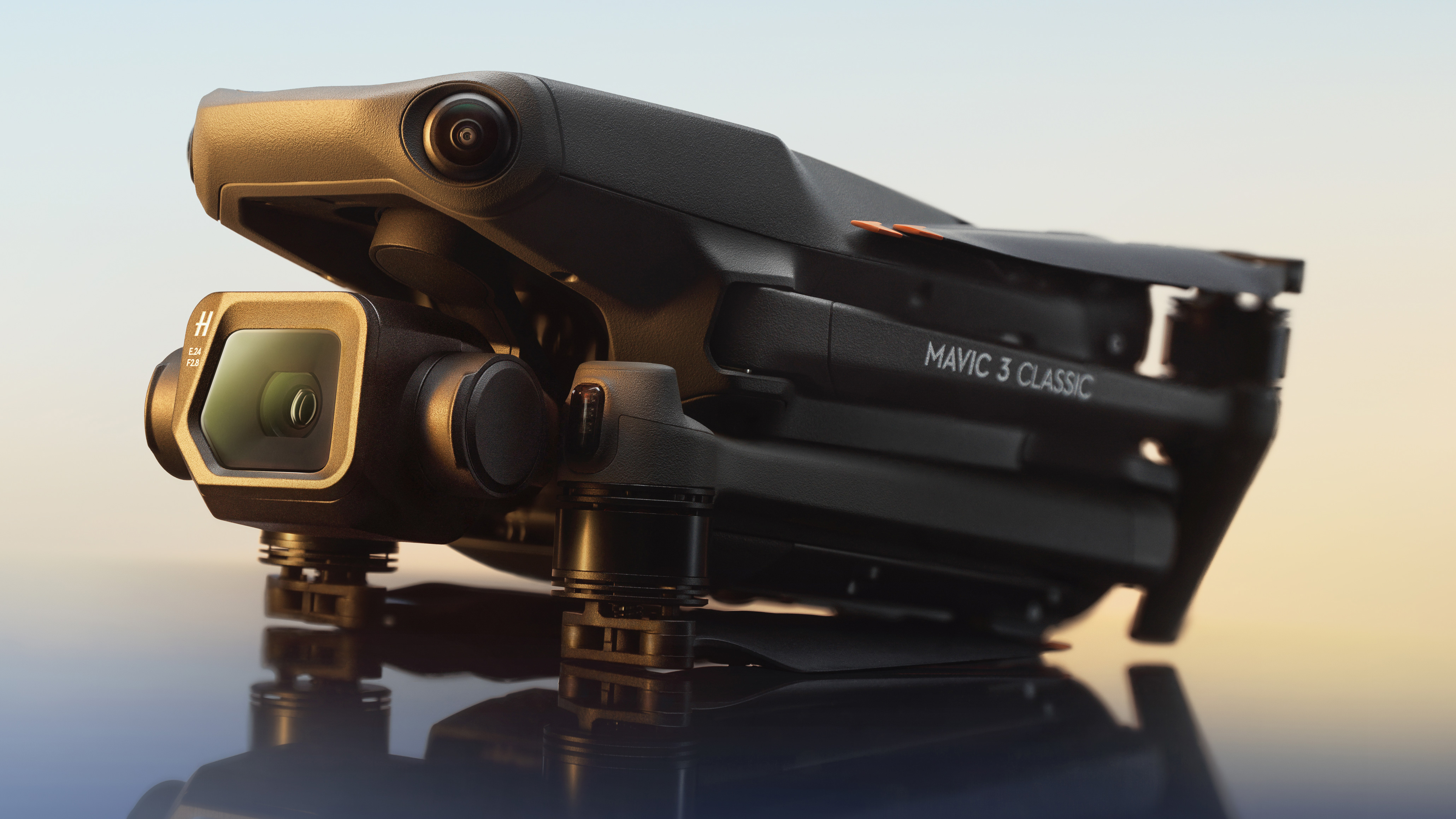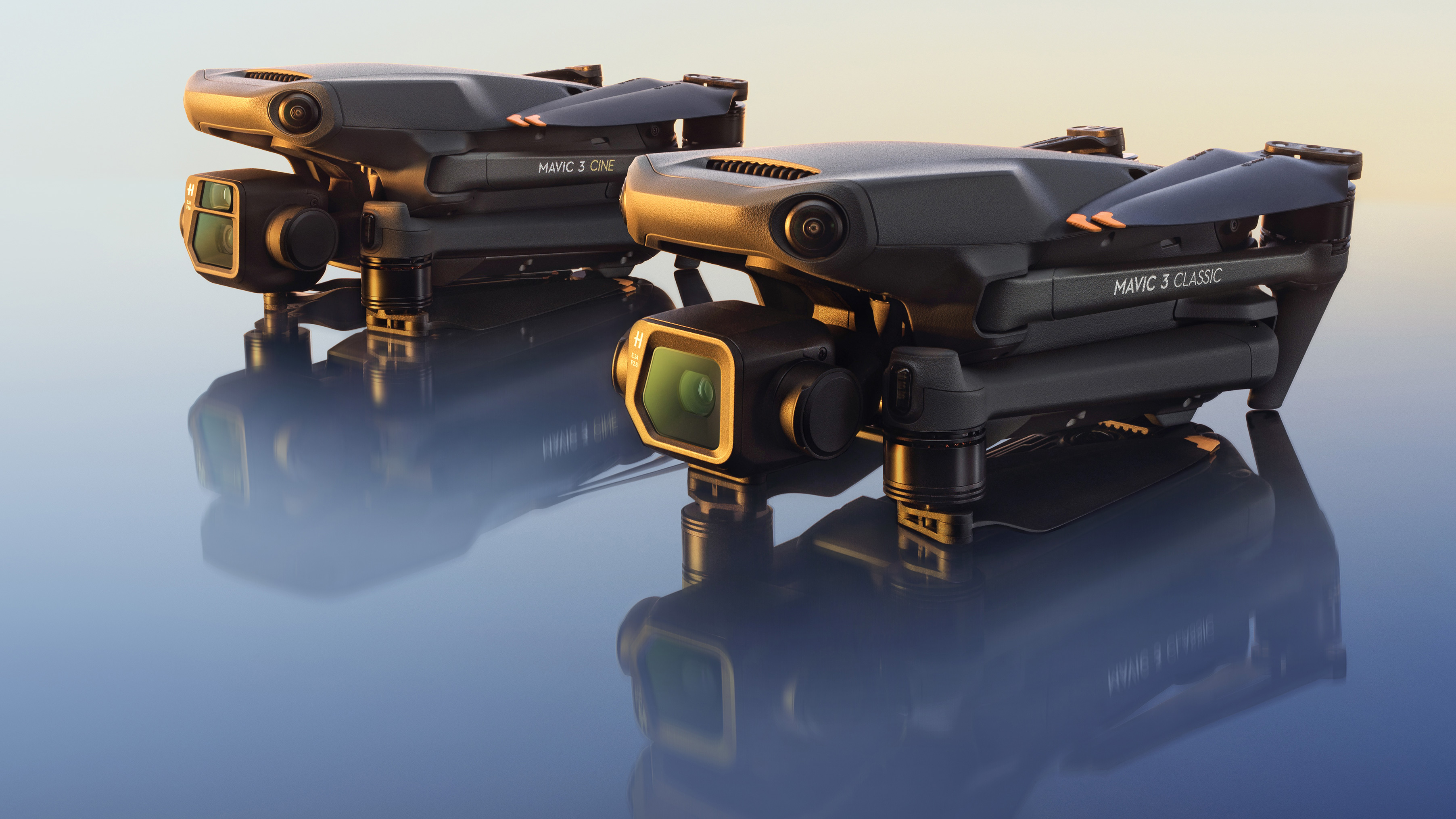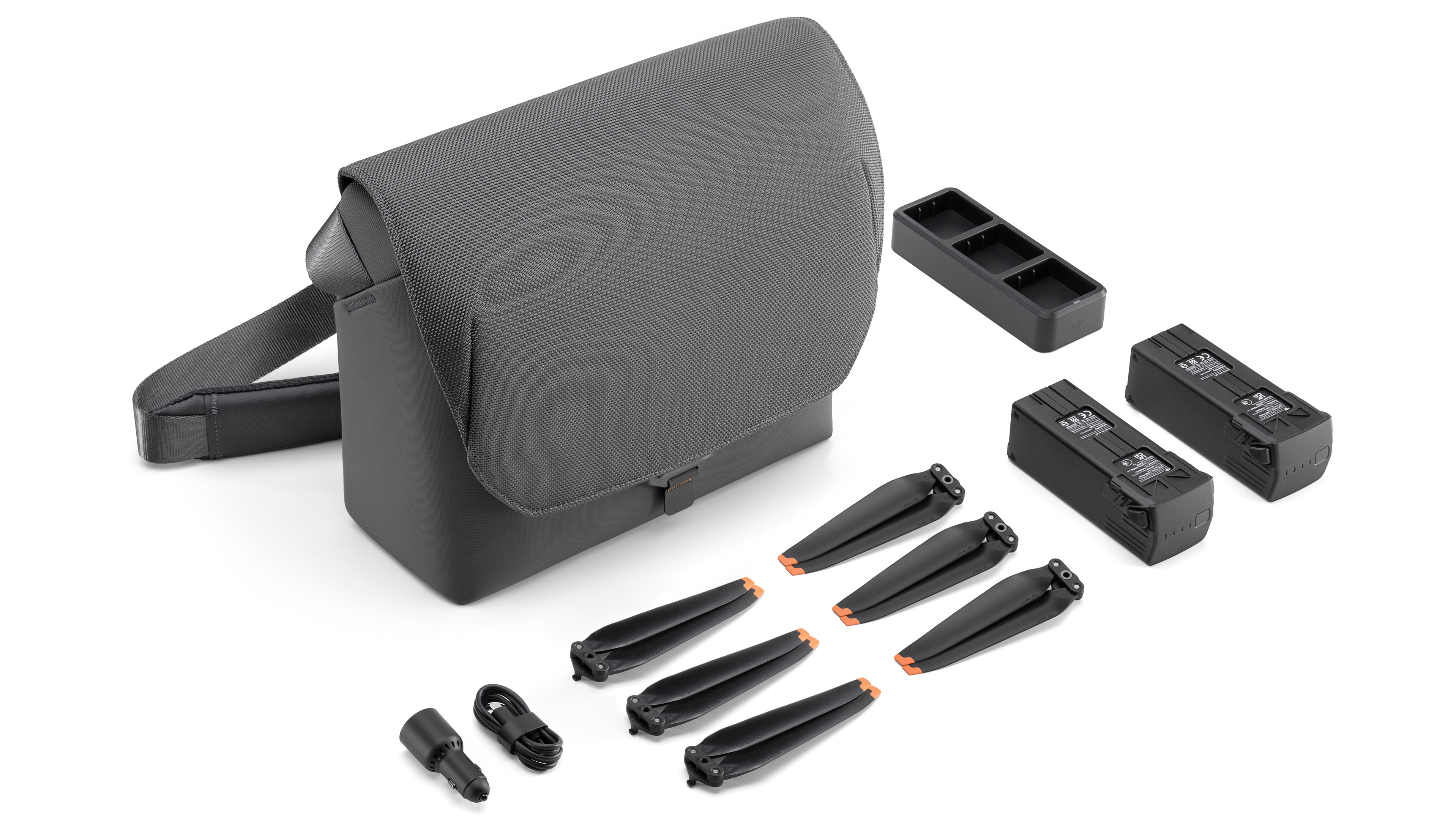DJI Mavic 3 Classic: new cheaper drone with just the one Hasselblad camera
DJI Mavic 3 Classic drone sacrifices the 7x zoom camera but retains the aspirational 4/3rds Hasselblad camera

Late in 2021 the Mavic 3 arrived sporting dual cameras, the option of Cine SSD, and (as many noticed at the time) a significant price rise compared to the Mavic 2 Pro. For many creatives the draw of the Mavic 3’s 28x Hybrid Zoom are limited – the main appeal being the 20 megapixel 4/3rds main camera with variable aperture.
With the original DJI Mavic 3 coming in at $2,049 / £1,729 / AU$2,899 as DJI’s cheapest offering with a variable aperture, some were starting to look at alternatives like the Autel EVO Lite+ which offers a large sensor and variable aperture for less.
Pre-orders:
US:
Pre-order Mavic 3 Classic + Charger + RC-N1 controller at B&H
Pre-order Mavic 3 Classic + Charger + DJI RC controller at B&H
Pre-order Mavic 3 Classic + RC-N1 controller at Adorama
Pre-order Mavic 3 Classic (drone only) at Adorama
Pre-order Mavic 3 Classic + DJI RC controller at Adorama
UK:
Pre-order Mavic 3 Classic Charger + RC-N1 controller at Wex
Pre-order Mavic 3 Classic + Charger + DJI RC controller at Wex
Pre-order Mavic 3 Classic (Drone Only) at Wex
AU:
Pre-order Mavic 3 Classic Charger + RC-N1 controller at DJI
Pre-order Mavic 3 Classic + Charger + DJI RC controller at DJI
Pre-order Mavic 3 Classic (Drone Only) at DJI
Get the Digital Camera World Newsletter
The best camera deals, reviews, product advice, and unmissable photography news, direct to your inbox!

The new Mavic 3 Classic represents DJI’s answer; a cheaper way to access the Hasselblad 4/3 rds CMOS 20-megapixel camera, 46-minute flight time of the original drone without laying down as much cash. Retaining the original chassis also means the drone takes the same batteries, has the same ADS-B receiver, and sports all-round collision sensing and APAS 5.0.
What the Classic doesn’t have is the internal storage or ProRes codes of the Mavic 3 Cine, but that remains a significant step up from the Mavic 3 (original) anyway – like that drone users will be expected to provide fast MicroSD storage.

Because the drone is built on the original Mavic 3 airframe, the FAA is expected to approve the compliance with the Remote ID rules. In Europe, it already fits into the Mavic 3’s C1 compliance certificate – allowing use in the A1 Open Category.
Owners of existing DJI products can take advantage of the option to buy the device drone-only (without a controller or charger) and save even more for owners of the RC-N1, DJI RC and RC Pro controllers. If you’re unfamiliar with the choice, the RC-N1 is now DJI’s standard remote which uses a phone as a monitor, while the others include built-in monitors. All three are compatible with the O3+ transmission system which offers up to 15km (8km in CE zones) range. If you’re looking at the Drone-only option, the Mavic 3 battery can be charged on the drone with a USB-C cable; DJI recommends its own 65W charger.
DJI Mavic 3 Classic pricing
- Mavic 3 Classic (Drone Only) : £1,469 / £ 1,309 / AU$2,299
- Mavic 3 Classic + Charger + RC-N1 controller: $1,599 / £1,399 / AU$2,399
- Mavic 3 Classic + Charger + DJI RC controller: $1,749 / £1,529 / AU$2,599

Following an approach set with the Mini 3 Pro, the Fly More Kit is available separately with an additional two 5000 mAh batteries, a 100W charging hub, convertible carrying bag (rucksack/satchel), 65W car charger, and 3 pairs of propellors for $649 / £529 / AU$799. All will be just as useful for the Mavic 3.
In terms of simple maths, that makes the middle bundle easiest to compare, at $450 / £320 / AU$800 cheaper than the dual camera Mavic 3.
We’ll post a full review soon.
Pre-orders:
US:
Pre-order Mavic 3 Classic + Charger + RC-N1 controller at B&H
Pre-order Mavic 3 Classic + Charger + DJI RC controller at B&H
Pre-order Mavic 3 Classic + RC-N1 controller at Adorama
Pre-order Mavic 3 Classic (drone only) at Adorama
Pre-order Mavic 3 Classic + DJI RC controller at Adorama
UK:
Pre-order Mavic 3 Classic Charger + RC-N1 controller at Wex
Pre-order Mavic 3 Classic + Charger + DJI RC controller at Wex
Pre-order Mavic 3 Classic (drone Only) at Wex
AU:
Pre-order Mavic 3 Classic Charger + RC-N1 controller at DJI
Pre-order Mavic 3 Classic + Charger + DJI RC controller at DJI
Pre-order Mavic 3 Classic (Drone Only) at DJI
Read more:
Best drones for aerial photography
Best DJI drones
The best indoor drones
Best travel drones
Drone rules, regulations and registration
Best underwater drones
Best cameras for kids

With over 20 years of expertise as a tech journalist, Adam brings a wealth of knowledge across a vast number of product categories, including timelapse cameras, home security cameras, NVR cameras, photography books, webcams, 3D printers and 3D scanners, borescopes, radar detectors… and, above all, drones.
Adam is our resident expert on all aspects of camera drones and drone photography, from buying guides on the best choices for aerial photographers of all ability levels to the latest rules and regulations on piloting drones.
He is the author of a number of books including The Complete Guide to Drones, The Smart Smart Home Handbook, 101 Tips for DSLR Video and The Drone Pilot's Handbook.
